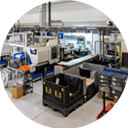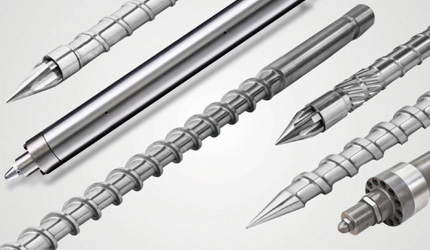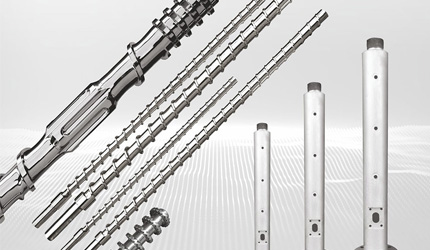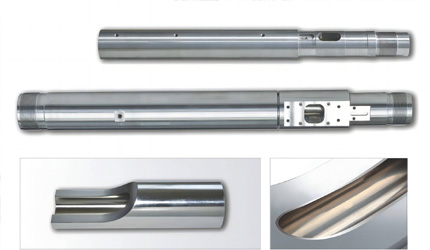Bimetallic Screw Barrel Material: Balancing Initial and Ongoing Costs
Bimetallic Screw Barrel Material: Balancing Initial and Ongoing Costs
Bimetallic Screw Barrels in Extrusion and Injection Molding: Structure and Key Applications
Bimetallic screw barrels play a vital role in many industrial tasks. They stand out especially in extrusion and injection molding work. These parts manage heavy wear from handling plastics, metals, and other tough materials. A bimetallic screw barrel stands apart from usual ones. It joins two different metal layers. This bond creates greater strength and lasting power.
What are Bimetallic Screw Barrels?
Bimetallic screw barrels include a main metal, often steel. They add a layer of tough, wear-fighting material. Common choices cover chrome or nickel alloy. This two-layer setup gives a smart mix of toughness, resistance to damage, and reasonable pricing. The inside layer touches the processed items. It fights strong rubbing and harsh settings. The outside layer offers solid backing and some bend.
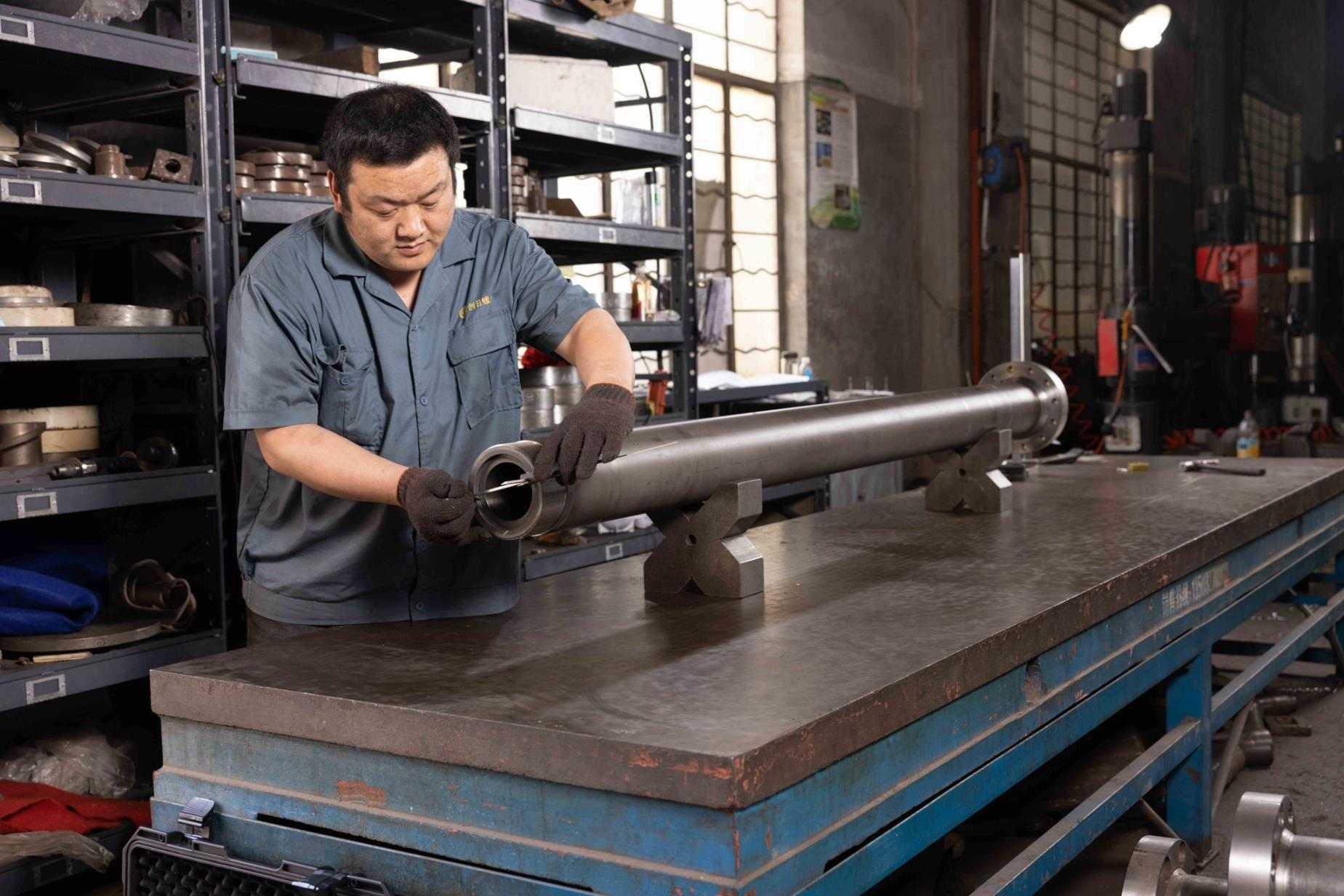
Common Applications of Bimetallic Screw Barrels
Bimetallic screw barrels find main use in extrusion and injection molding equipment. These fields need high-quality materials and protection against wear. People apply them in plastic mixing, filmmaking, or other busy production steps. Bimetallic screw barrels keep machines running smoothly. They cut stops and fix-up expenses.
Initial Costs of Bimetallic Screw Barrels: What to Expect
Picking bimetallic screw barrels means looking at start-up spending and future running expenses. The first price for bimetallic screw barrels often exceeds that of regular types. Yet, their special build leads to stronger gains over time. It comes from better work and a longer life.
Material Selection and Its Impact on Initial Investment
The primary factor influencing the initial cost of bimetallic screw barrels is the choice of materials. The base metal, typically stainless steel or carbon steel, is chosen for its strength and cost-effectiveness. The wear-resistant layer is usually made from an alloy like chrome, which is more expensive but offers superior longevity.
-
Chrome Plating: Offers excellent resistance to wear and corrosion, but increases the initial cost.
-
Nickel Alloy Coating: Typically more affordable than chrome but still provides good resistance to abrasion and corrosion.
-
Stainless Steel: Commonly used for the base material, offering a good balance of strength and cost.
The selection of these materials directly impacts the price, with higher-end alloys increasing the initial cost of the screw barrels.
Design and Customization: Key Cost Drivers
In addition to the materials used, the design of the screw barrel itself also influences its initial price. Customizations, such as varying the length, diameter, and coating thickness, can add to the cost. However, these modifications can improve the barrel’s performance and extend its service life, justifying the higher initial expenditure.
-
Customized Coating Thickness: For specific high-wear applications, thicker coatings may be necessary.
-
Length and Diameter Variations: Depending on the machine type and the materials processed, these variations are often required to optimize efficiency.
By understanding these design choices, manufacturers can make informed decisions about the level of customization required for their operations.
Long-Term Costs: Maintenance and Durability of Bimetallic Screw Barrels
Bimetallic screw barrels start with a bigger price tag. Their outstanding lasting strength cuts future work costs a lot. This shows in fixes and stop times. Over the years, these barrels have held steady output. They need fewer swaps. Thus, they prove wise spending in the end.
The Role of Wear Resistance in Ongoing Costs
Protection from wear marks is a key trait of bimetallic screw barrels. The tough layers lower the call for often swapping and mending. Such actions cost a lot and halt workflow. The alloy mix keeps barrels at best levels longer. It holds fixed costs down.
-
Extended Maintenance Intervals: Thanks to strong bimetallic layers, checks come less often.
-
Reduced Downtime: Fewer swaps and mends mean shorter machine stops. This matters in fields where every minute counts.
This leads to big savings for firms. It helps most in large output lines.
Maintenance Needs and Service Lifespan
The useful years of a bimetallic screw barrel shift with processed items and work settings. In general, bimetallic screw barrels outlast single-metal types by far. Their life can reach many years.
-
Routine Inspections: Steady looks help spot barrel state. They catch early damage signs.
-
Repairs and Replacements: At times, the protective layer needs fresh work after heavy use. Yet, these expenses stay low next to the often swaps of single-metal barrels.

How to Balance Initial and Ongoing Costs: Making the Right Choice
Selecting a fitting bimetallic screw barrel goes beyond just starting price checks. Factory teams should use a full ownership cost view. It covers early spending and future gains in fixes, mends, and stops.
Total Cost of Ownership (TCO) Approach for Bimetallic Screw Barrels
To judge the true value of bimetallic screw barrels, focus on the full ownership cost. Skip just the first price. A pricier barrel may work better and last longer. In the end, it lowers total firm costs.
-
Initial Cost: The early spending for a top-grade bimetallic barrel.
-
Maintenance and Downtime: The steady expenses from mends, checks, and machine stops.
-
Replacement Costs: Think about spending on barrels that fail too soon.
By weighing all points, factory leaders decide smarter. It fits their lasting aims.
Cost-Saving Strategies: Maximizing the Lifespan of Your Screw Barrel
Several paths help stretch the bimetallic screw barrel’s life. They cut often pricey swaps and mends.
-
Regular Maintenance: A set check plan spots issues early. It stops them from growing costly.
-
Optimal Usage: Keeping the screw barrel within set limits avoids extra damage. It lengthens useful time.
By using these plans, firms gain more from bimetallic screw barrels. They lower future expenses.
Introducing CHUANGRI SCREW: High-Precision Bimetallic Screw Barrels
At CHUANGRI SCREW, we focus on crafting top-accuracy Bimetallic Screw Barrels. They deliver outstanding work and strength for tough jobs. Our items handle the hardest work settings. This ensures clients gain full value from their spending.
Why Choose CHUANGRI SCREW for Your Bimetallic Screw Barrels?
We grasp the need for steady machines in output lines. That is why our bimetallic screw barrels use quality items. They mix strong work with fair pricing. Our barrels endure longer. They need fewer checks. They give steady results. All this builds higher gains for your firm.
CHUANGRI SCREW’s Role in Reducing Both Initial and Ongoing Costs
Our bimetallic screw barrels offer a lasting answer. They cut early and future expenses. With our modern manufacturing steps, every barrel meets top strength and work marks. Picking CHUANGRI SCREW means spending on an item. It brings quick efficiency and lasting savings.
FAQ
Q: What are the advantages of bimetallic screw barrels compared to monometallic ones?
A: Bimetallic screw barrels provide better fight against damage. They offer longer years and lower check costs. The two-item build lets barrels handle high-rub and harsh spots. This makes them tougher over time.
Q: How do I know if a bimetallic screw barrel is the right choice for my business?
A: If your firm depends on heavy-stress making steps, like extrusion or injection molding, choose a bimetallic screw barrel. It has a stronger lasting power and fights damage in high-amount or high-wear jobs well.
Q: How can I reduce maintenance costs for bimetallic screw barrels?
A: Steady checks, like planned looks and maker usage tips, cut mend needs. They stretch barrel years.
Q: Are there cost-effective alternatives to bimetallic screw barrels?
A: Cheaper choices exist, such as monometallic screw barrels. But, they bring higher check and swap costs. Bimetallic screw barrels give better future savings. This holds despite the bigger start-up spending.
Q: What is the average lifespan of a bimetallic screw barrel?
A: The years of a bimetallic screw barrel change with the job. Yet, it usually lasts several years with good care. It far beats the usual monometallic barrels.

